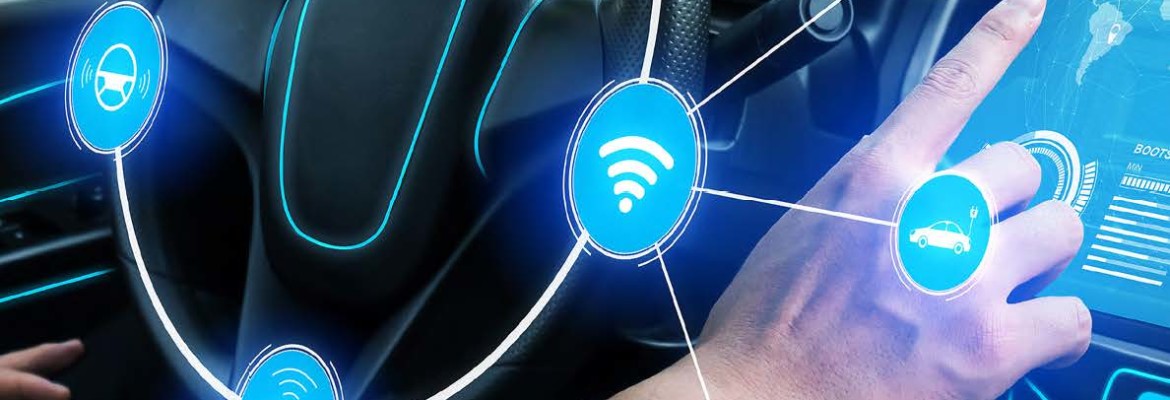Bigger screens, better sound
Infotainment systems continue to improve but good music never goes out of style
From the beloved old eight-tracks of the 60s and 70s and the smaller cassette tapes of the 80s and mid-90s, to the silver compact discs of the late 90s and early 2000s, and then those auxiliary input jacks that allow drivers to plug their Apple iPods and other MP3 players directly into their vehicles, there’s no doubt that the technology that goes into car stereos is changing and growing as fast as the car models themselves.
One thing that hasn’t changed: drivers and passengers love their road trips and car tunes.
The most recent technological shift to the typical car stereo, the shiniest of new toys for newer vehicles and now also being installed as after-market parts in older vehicles as well, are of course full in-car entertainment (ICE) systems, more commonly referred to in the auto and trucking industry as in-vehicle infotainment (IVI).
A solid definition from WheelScene.com calls a vehicle “infotainment system an in-dash system designed to both inform and entertain the driver, as well as the passengers…
“An infotainment system controls the sound system, which can include the radio, maybe a CD player, connected audio device, satellite radio (and) on upgraded or luxury models it might contain a navigation system,” WheelScene says.
“In addition, infotainment systems might do everything from (provide updates) when regular maintenance is needed to provide a digital copy of the vehicle owner’s manual. In some cars, the infotainment system even controls the heating and cooling systems for the cabin.”

DARRYL AND SARAH RUSSELL, OWNERS OF
ATLANTIC CAR STEREO
And the list goes on, with infotainment systems in some hybrid and electric vehicles providing energy storage and drivetrain updates, and new safety features such as back-up cameras, blind-spot detection, forward collision warnings and much more being continuously integrated as the technology itself improves.
And of course, vital to any true stereo system, is the ability to throw on some music and hit the highway with your favourite musicians.
For many consumers, their favourite music is all now stored on the mini-computers they carry around in their pockets or purses – their cell phones – which means car companies have adapted quickly with integrated systems such as Apple CarPlay and Google’s Android Auto.
The latest addition to integrated vehicle infotainment systems is Android Automotive, which is starting to appear in vehicles from General Motor, Renault, Nissan and Mitsubishi and will eventually even start replacing Ford’s own Sync system, which has been around for about a decade and a half.
“The big thing with the infotainment with the OEM (Original Equipment Manufacturer) car, like what comes in the car, is that it’s more integrated into the car,” said Darryl Russell, who owns Atlantic Car Stereo in Dartmouth, N.S., along with wife Sarah Russell.
“The radio is no longer just a radio. It’s also a display for some of the functions of the vehicle; it allows you to access some of those features and modify them, whereas before you could never do things like that,” Russell says of the ever-evolving infotainment systems.
“For us, it can be a little more difficult to adapt, so a lot of times we’re no longer changing the infotainment system, we’re upgrading the functionality,” Russell said. So for example, adding cameras to the original screens in pre-2018 models or Bluetooth capabilities to vehicles that didn’t already have that function.
“Since 2018, (back-up) cameras are mandatory,” Russell said, adding that’s opened up the door for more safety features to be included in infotainment systems, such as lane-changing cameras.
“It’s much more involved,” Russell said of the changing stereo installation industry. “A growing side of our business is integrating with what is currently there versus just replacing (a whole system).”
That even means adding Apple CarPlay and Android Auto to older vehicles that didn’t come ready-made with their own infotainment system that could connect directly with their driver’s smartphone.
“We have seen an uptick in replacements in older vehicles,” Russell said, adding Atlantic Car Stereo is generally upgrading vehicles that are 2010 or up, particularly within the 2012-2014 range, including a lot of trucks that didn’t come with the technology then.
“They’re integrating quite seamlessly with the phones now,” Russell said of the newer infotainment systems. “Before, everyone’s software needed to match, but some of that has become better.”
Software improvements have been vital to ensure smooth transition from one car to another, and one phone to another, since as Russell points out, “everyone’s life is on their phone … So it’s about making it seamless from one vehicle to the next and that things work the same way.”
“Everything is plug and play,” agreed Nas Amiri, owner of the Canadian branch of Infotainment, a company which started south of the border and copyrighted the popular term, creating the websites Infotainment.com and Infotaintment.ca, where customers can shop online for systems that match their cars and sell their old vehicle radios, with dealer and wholesale discounts also offered.

“People are most interested in upgrades that involve their phones, because they’re so integrated with them,” said Amiri, whose company is based out of Mississauga, Ont. “People spend more time on their phone than anything else, so they want that similar atmosphere … when driving.”
And of course, drivers are also concerned about using their cell phones in their vehicles safely, with laws enacted in recent years to discourage talking or texting when behind the wheel. Infotainment systems allow drivers to make calls and interact with their phones totally hands-free.
Like all technology, infotainment will continue to change based on customer wants and needs, as well as due to general improvements in the systems themselves.
Manufacturers are adding “more touch-screen interfaces that include the speedometer and the radio,” which means much bigger screens, Amiri said, estimating the ones in new Mercedes models to be 18 to 20 inches long. Overall, he said, the trend now is to become more and more personalized.”
“Tesla, for the Model S, was a huge game-changer because that gave a whole different look and whole different feel to it, and made it a bit more personal,” Amiri said of its infotainment system including larger screen. “It’s also safer because you can see things a bit better visually (using the cameras).”
The Russells over at Atlantic Car Stereo agree “larger screens” and more touch panels are the next big trends in how infotainment systems will continue to change in look and feel.
Another trend Atlantic Car Stereo is seeing, which is nice in that it’s kind of old school, is that “people are wanting better sound,” Russell said.
“We did see a decline years ago … but now we seem to be back to like 20 years ago; people want true audio in their car; they want an experience like they’d get at home with their home stereo.”
No matter how it’s played, good music never goes out of style.


